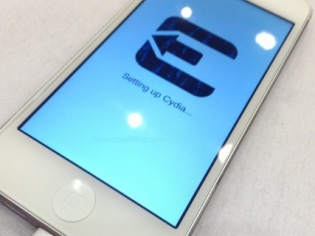-
Wrik Sen
28th Jun 2016
Jailbreaking/rooting is a computer science or application development term, used to define activities undertaken to go past the digital restrictions employed by various applications and operating system, primarily with the aim of lifting restrictions, and realizing the benefits of new features, and freedom it bring along. In the case on Android, it is called Rooting, whereas iOS by Apple has jailbreaking attached to it.
How did Jailbreak come into being?
iOS became an operating system for Apple's devices such as iPhones, iPads, iPod touch, but came with numerous restrictions, which did not have the basic features which one might identify on this day. These limitations however, frustrated a lot of users of Apple products, and with their coding and organizing skills, ended up creating a large worldwide network of jailbreakers.
Though Android being much more open source as an operating system software, still sports a large rooting community, which takes pleasure in any and all restrictions being removed from their devices. Unlike iOS, rooting an Android device is far more invasive, and ensures complete control of the operating system of the device, often giving the option of removing the existing OS, and installing one's custom OS.
Why would one Jailbreak/Root?
If one has an iPhone to use, there will be a great chance that the user would not be happy with the existing OS, especially concerning any restrictions placed. Because iOS is a custom made option from Apple, for the sake of security and perhaps perceived experience, the company restricts its product and hardware in some parameters.
However, one wants to be in total control, and give the device a full run of its potential, by removing restrictions, and bringing in more of 3rd party applications into the fold. Take the Cydia store as an example. Its an app store where users who have jailbroken their iOS devices, can then experiment with 3rd party applications and modifications, which can be as simple as UI functionality, or more complicated applications modifications.
In the case of Android, things are a more 'open' so to say. The OS is created as an open-source software. However, since manufacturers typically customize it into their own editions due to this very flexibility, aimed at giving the user a better experience of the device, there could be every chance one might want to create one's custom OS, or even a newer version of the OS, to realise the device's full potential. But, in this case, it goes much deeper, as one can get to the root of the OS, and totally replace it with a new one.
The bottomline
Tweaking operating systems on one's devices is a habit, and a need for a good lot. In that case, no matter how open source the OS actually is, the need to experiment and change will always be there. On a comparative basis henceforth, the Android OS is the most flexible and gives one better options, as compared to the Apple's iOS. But then, be careful and thread a thin line; too much of experiment could also destabilize or damage the device. Knowing in depth of one's experiment is always a bit more helpful, and perhaps more challenging than modding one's PC.
Clarifying Android Rooting And iOS Jailbreaking | TechTree.com
Clarifying Android Rooting And iOS Jailbreaking
Some basic concepts about what is Android Rooting and iOS Jailbreaking, and the difference between them.
News Corner
- DRIFE Begins Operations in Namma Bengaluru
- Sevenaire launches ‘NEPTUNE’ – 24W Portable Speaker with RGB LED Lights
- Inbase launches ‘Urban Q1 Pro’ TWS Earbuds with Smart Touch control in India
- Airtel announces Rs 6000 cashback on purchase of smartphones from leading brands
- 78% of Indians are saving to spend during the festive season and 72% will splurge on gadgets & electronics
- 5 Tips For Buying A TV This Festive Season
- Facebook launches its largest creator education program in India
- 5 educational tech toys for young and aspiring engineers
- Mid-range smartphones emerge as customer favourites this festive season, reveals Amazon survey
- COLORFUL Launches Onebot M24A1 AIO PC for Professionals







TECHTREE